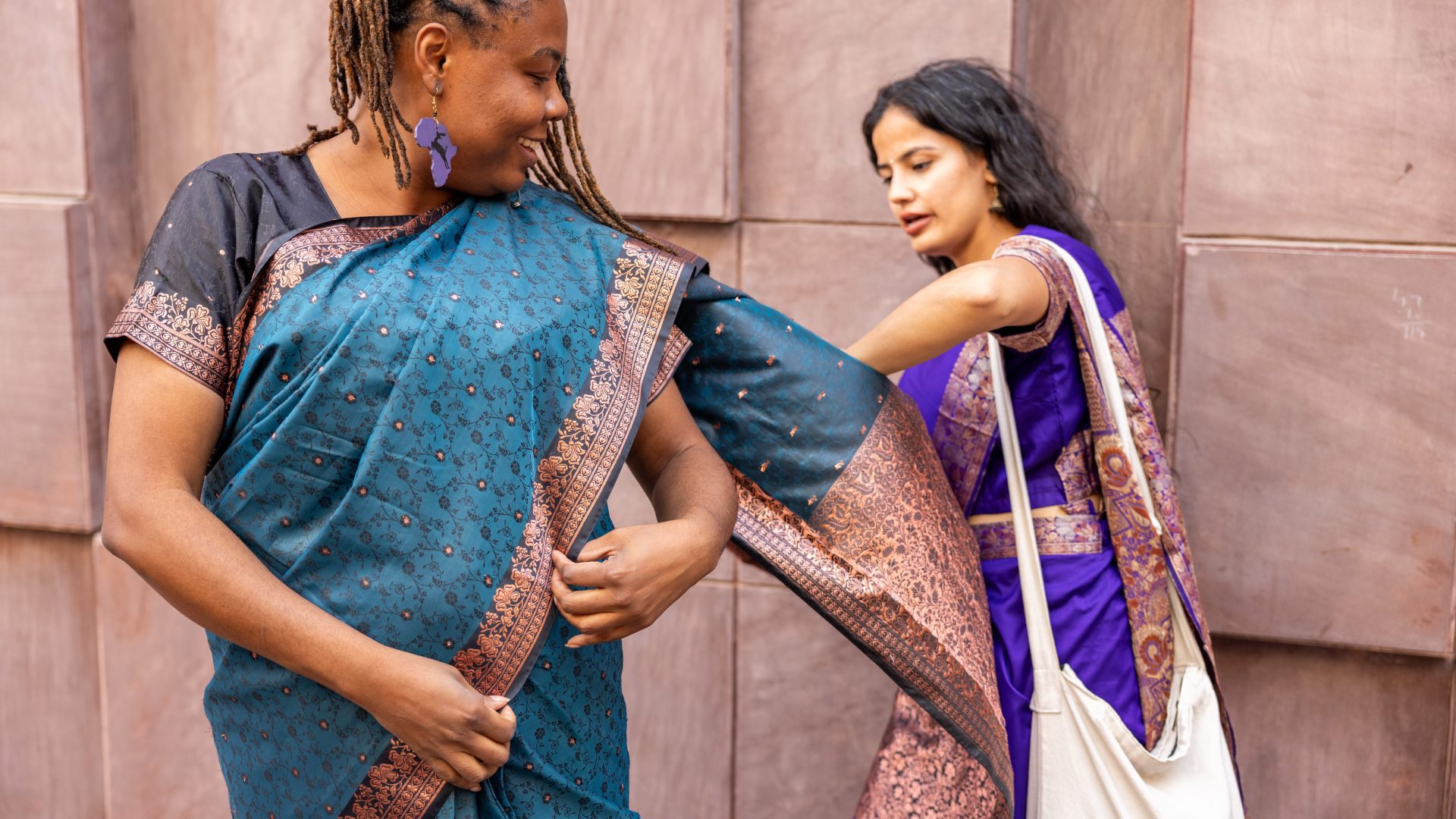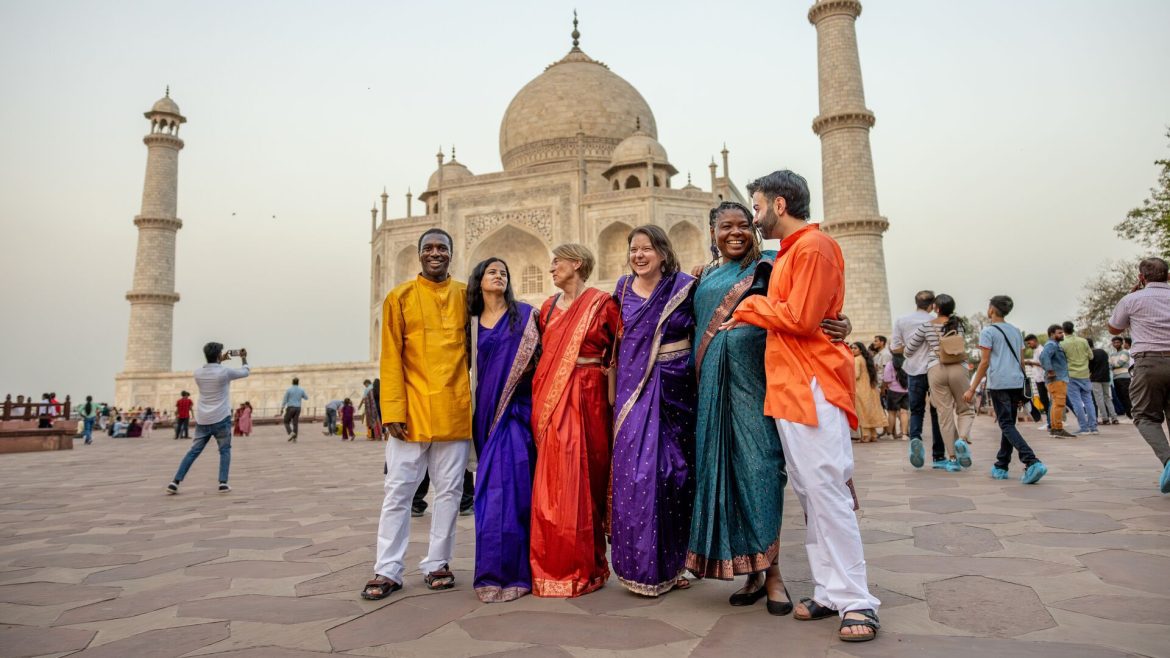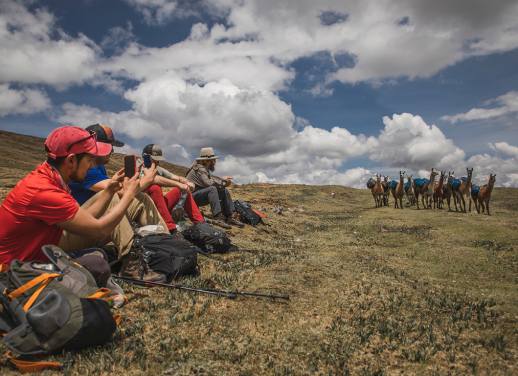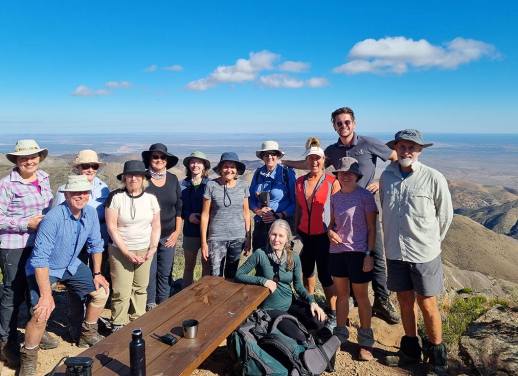Saree and turbans in India. Kimonos in Japan. Mantas and monteras in Peru. These are just some of the traditional clothes travellers have an opportunity to learn about on Intrepid trips. You may even want to try them on yourself. But what’s the etiquette for visitors who wish to dress in traditional clothing?
Understanding the ‘right’ thing to wear or not wear when travelling isn’t always obvious. The more places I’ve visited, the more I’ve learned that researching the values and etiquette of where I’m going is as important to me when choosing clothing for the trip as the weather forecast.
Wearing traditional clothing from another culture is a different consideration entirely.
When I found out that my India Women’s Expedition would include the opportunity to dress in a saree, I had many questions. All variations on, ‘Is this… OK?’
The traditional dress for Indian women is so beautiful, and the opportunity to learn more about it sounded really special. But as a white North American visitor, I admit I was worried about how donning a local outfit might be perceived. Appreciation? Or appropriation? The popular public service campaign ‘My culture is not a costume’ came to mind.

‘We do acknowledge and understand that with this activity, a cautious and careful approach is required,’ says Rama Mahendru, general manager of Intrepid India.
‘Instead of just handing ethnic wear over to our travellers directly, we make sure our leader present is communicating about the appropriate behaviours while dressed in local wear. If we are respectful and responsible, as Intrepid has always been, dressing up can be an amazing experience. It’s fun, interactive and can connect people better.’
I was grateful to have a female Intrepid leader I could talk to honestly about my reservations. Anjali explained we would be visiting the home of a local woman to choose a saree with their guidance and learn how to put it on, and she reassured our group that locals are appreciative of our interest and efforts to connect more with their culture.
I have learned that authentic interaction like this between guests and locals is at the heart of Intrepid’s activities involving traditional dress.
‘Traditional attire has always been a big part of culture of a country,’ explains Rama. ‘On our trips, we offer this experience as an opportunity for our guests to be mingled with the culture of the country more deeply… to connect them with the location more and increase the local interaction.’
In India, there are three opportunities for Intrepid travellers to participate in this type of cultural exchange. My group experienced this in Agra, where women are offered pre-stitched ready-to-wear sarees (a skirt, top and draping scarf). Traditional male kurta pyjamas are also available to wear for their visit to the Taj Mahal.
On the Classic Rajasthan trip, guests have the opportunity to wear traditional apparel for a special dinner at Fort Madhogarh, including a lehnga (skirt), kurti (tunic) and odhni (scarf) for women, while men may have turbans tied on their head.
Elsewhere in Asia, Intrepid’s Essential Japan trip for 18 to 35s offers an optional kimono, maiko, or samurai rental in Kyoto. On Explore Taiwan groups visit the Indigenous Ayatal Tribe in Yilan and travellers can learn about and try on their traditional clothes. On the South Korea Family Holiday, adults and kids are provided with pants and a tunic to wear in the Golgulsa Temple, in accordance with the monastery’s dress code.
In South America, Peru Essentials features a visit to the folklore capital of the country on Lake Titicaca and includes a homestay with the opportunity to wear in local Inca clothing, like mantas (shawls) and monteras (hats).


I think back to my own Intrepid trip in Morocco, and regret that I didn’t take advantage of the offer to learn how to tie a shesh (head scarf) in a traditional manner for our camel ride across the Sahara. At the time, I wasn’t quite convinced it would be appropriate to try and dress like a local, so I tied my scarf myself. Spoiler: in the beautiful-but-oh-so-unforgiving desert environment, learning the Desert Way of doing things is always a smarter idea than what you think you know!
It’s important to note that sometimes there are opportunities that don’t feel right, so if you’re unsure it’s best to follow your leader’s cues. In India, I witnessed photo ops at popular tourist destinations which definitely felt more like a funny costume than a genuine cultural interaction. And Intrepid’s Tibet staff do not recommend similar photo stops in Lhasa, where traditional Tibetan clothing is often not authentic, nor run by Tibetans themselves.
Having a local leader for this kind of experience is helpful not only for choosing clothing with care and understanding, but also for navigating any etiquette questions that may come up as you wear the clothing in public. Going to the Taj Mahal in a saree attracted a lot more attention than I am used to from locals, but after being advised to meet their curiosity with a smile, the awkwardness disappeared.


I still believe it’s normal to have questions and concerns before dressing in traditional clothing as a traveller, but I’m also confident that trying this out on an Intrepid trip, with the guidance of a leader, can be a very positive experience for both visitors and locals. (Dressing up is also optional, of course, so there’s no pressure).
I look back at my photos in the saree in India with much happiness knowing that the once-in-a-lifetime experience was educational, joyful and, most importantly, respectful.
Discover traditional experiences on an Intrepid small group adventures.




